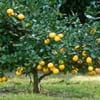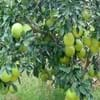Life Span
Perennial
Perennial
Origin
Mexico, Central America
Southeastern United States
Types
Reinikie, Dade, Pike, Suebelle and Golden
Climate
Not available
Number of Varieties
Not Available
Habitat
Tropical Highlands
Bluffs, Coastal Regions, Stream side, Woods
USDA Hardiness Zone
8-11
5-9
Sunset Zone
H1, H2, 14, 15, 16, 17, 18, 19, 20, 21, 22, 23, 24
Not Available
Habit
Oval or Rounded
Spreading
Flower Color
Light Green, Ivory
White, Pink
Flower Color Modifier
Bicolor
Bicolor
Fruit Color
Light Yellow, Yellow green, Light Green
Brown
Leaf Color in Spring
Green, Dark Green
Green
Leaf Color in Summer
Green, Dark Green
Dark Green
Leaf Color in Fall
Green, Dark Green
Lemon yellow, Yellow green
Leaf Color in Winter
Light Green
Not Available
Leaf Shape
Alternate
Palmate
Plant Season
Spring, Summer, Fall, Winter
Spring, Summer, Fall
Sunlight
Full Sun
Full Sun, Partial Sun, Partial shade
Type of Soil
Loam, Sand
Clay, Loam, Sand
The pH of Soil
Acidic, Neutral
Acidic, Neutral, Alkaline
Soil Drainage
Well drained
Average
Bloom Time
Winter, Late Winter
Summer, Late Summer
Tolerances
Drought
Salt, Wind
Where to Plant?
Ground
Ground, Pot
How to Plant?
Budding, Grafting, Seedlings, Vegetative
Cuttings, Seedlings
Plant Maintenance
Medium
Low
Watering Requirements
Do not water frequently, Needs more water during establishment, Water during dry weather
Keep the Soil well drained, Requires regular watering
In Summer
Lots of watering
Lots of watering
In Spring
Moderate
Moderate
In Winter
Average Water
Average Water
Soil pH
Acidic, Neutral
Acidic, Neutral, Alkaline
Soil Type
Loam, Sand
Clay, Loam, Sand
Soil Drainage Capacity
Well drained
Average
Sun Exposure
Full Sun
Full Sun, Partial Sun, Partial shade
Pruning
Remove damaged leaves, Remove dead branches, Remove dead leaves
Remove damaged leaves, Remove dead branches, Remove dead flowers, Remove dead leaves
Fertilizers
All-Purpose Liquid Fertilizer
14-14-14 Fertilizer, Apply N-P-K, slow-release fertilizers
Pests and Diseases
Red blotch
Edema, Powdery mildew, Verticillium Wilt
Plant Tolerance
Drought
Salt, Wind
Flowers
Insignificant
Showy
Flower Petal Number
Single
Single
Fragrant Flower
Not Available
Yes
Foliage Texture
Medium
Coarse
Foliage Sheen
Matte
Matte
Attracts
Birds
Butterflies, Hummingbirds
Allergy
drowsiness
Pollen
Aesthetic Uses
Not Used For Aesthetic Purpose
Cottage Garden, Showy Purposes
Beauty Benefits
Not Available
Not Available
Environmental Uses
Air purification
Air purification, Wildlife
Medicinal Uses
Anti-carcinogenic effects, Colon Cancer
Antirheumatic, Colic, constipation, Piles
Part of Plant Used
Fruits, Pulp, Seeds
Seeds
Other Uses
Used As Food
Used for making soaps
Used As Indoor Plant
No
No
Used As Outdoor Plant
Yes
Yes
Garden Design
Edible, Fruit / Fruit Tree, Shade Trees, Tropical
Feature Plant, Foundation, Screening, Wind Break
Botanical Name
CASIMIROA edulis
AESCULUS parviflora
Common Name
White Sapote
bottlebrush buckeye, dwarf horse chestnut
In Hindi
White Sapote
Bottlebrush Buckeye
In German
White Sapote
Buckeye Putzer
In French
Sapote blanche
Bottlebrush Buckeye
In Spanish
White Sapote
bottlebrush Buckeye
In Greek
White Sapote
bottlebrush Buckeye
In Portuguese
White Sapote
Bottlebrush Buckeye
In Polish
White Sapote
Bottlebrush Buckeye
In Latin
White Sapote
bottlebrush Buckeye
Phylum
Magnoliophyta
Magnoliophyta
Class
Magnoliopsida
Magnoliopsida
Order
Sapindales
Sapindales
Family
Rutaceae
Hippocastanaceae
Clade
Angiosperms, Eudicots, Rosids
Angiosperms, Eudicots, Rosids
Tribe
Not Available
Not Available
Subfamily
Not Applicable
Hippocastanoideae
Importance of White Sapote and Bottlebrush Buckeye
Want to have the most appropriate plant for your garden? You might want to know the importance of White Sapote and Bottlebrush Buckeye. Basically, these two plants vary in many aspects. Compare White Sapote and Bottlebrush Buckeye as they differ in many characteristics such as their life, care, benefits, facts, etc. Every gardener must at least have the slightest clue about the plants he wants to plant in his garden. Compare their benefits, which differ in many ways like facts and uses. The medicinal use of White Sapote is Anti-carcinogenic effects and Colon Cancer whereas of Bottlebrush Buckeye is Antirheumatic, Colic, constipation and Piles. White Sapote has beauty benefits as follows: Not Available while Bottlebrush Buckeye has beauty benefits as follows: Not Available.
Compare Facts of White Sapote vs Bottlebrush Buckeye
How to choose the best garden plant for your garden depending upon its facts? Here garden plant comparison will help you to solve this query. Compare the facts of White Sapote vs Bottlebrush Buckeye and know which one to choose. As garden plants have benefits and other uses, allergy is also a major drawback of plants for some people. Allergic reactions of White Sapote are drowsiness whereas of Bottlebrush Buckeye have Pollen respectively. Having a fruit bearing plant in your garden can be a plus point of your garden. White Sapote has showy fruits and Bottlebrush Buckeye has no showy fruits. Also White Sapote is not flowering and Bottlebrush Buckeye is not flowering . You can compare White Sapote and Bottlebrush Buckeye facts and facts of other plants too.





